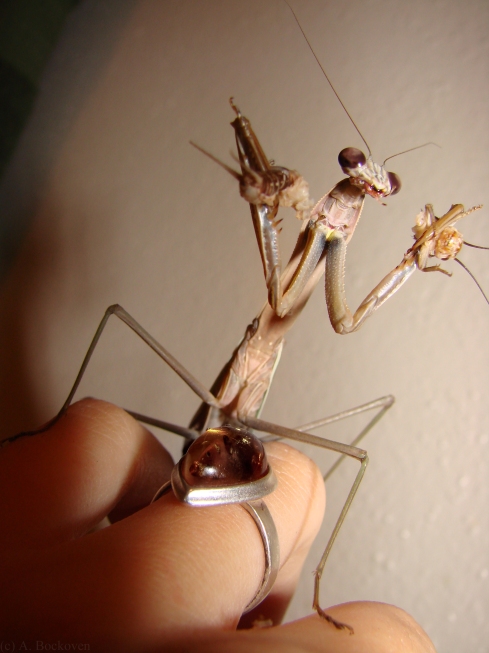
Close up of a Carolina mantis (Stagmomantis carolina).
Another close up. This is a Carolina mantis I’ve been raising for a while. Recently I took her along to an outreach program where we had a live insect zoo, and the kids got a huge kick out of seeing and holding a preying mantis.
Unfortunately, the mantis apparently found a pack of excited 6th grade girls a bit unnerving, and I had to put her back in her container when she started flashing her yellow hindwings in a threat display. I have never actually managed to get a mantis to do a display for me, so it was actually pretty interesting. Moreover, weeks later I still couldn’t come near her container without being the recipient of an immediate threat display. (Small children are apparently just that unsettling.)
I had meant to take a picture for the blog, but Christmas break has apparently soothed her nerves sufficiently that she can be handled again without instant mantis-freak-out.
Tags: Carolina mantis, Insects, Mantises, Stagmomantis carolina













Recent Comments